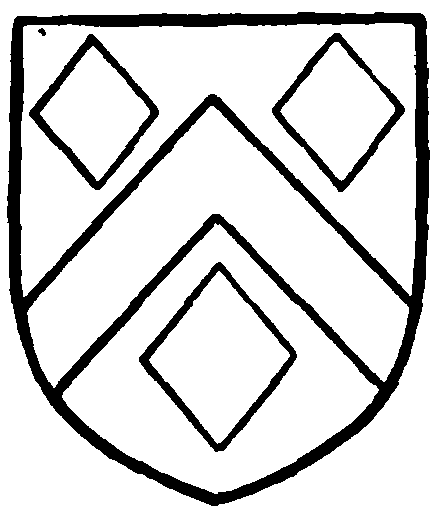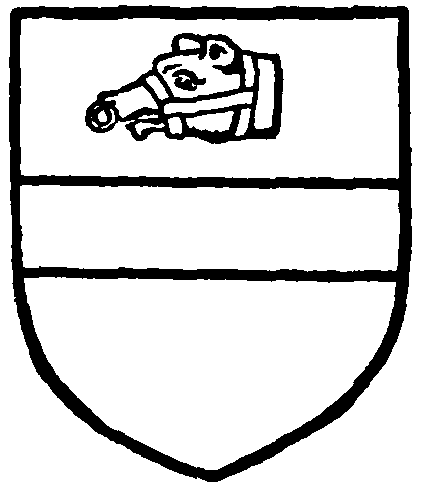Pages 540-542
A History of the County of Hampshire: Volume 4. Originally published by Victoria County History, London, 1911.
This free content was digitised by double rekeying. All rights reserved.
In this section
MELCHET PARK
Milchet (xi cent.); Mylcet, Milset, Melcet, Melkset, Mulchet (xiii cent.); Erles Milchet, Milchet, Melchuyt (xv cent.); Melchett (xvii cent.).
The parish of Melchet Park, formerly extraparochial, contains 539 acres of land and 2 acres of land covered by water, the greater part of which is included within the inclosure of Melchet Park. Park Water, a tributary of the River Blackwater, forms the western boundary between Melchet Park and Landford.
The greater part of the parish stands at an elevation of about 200 ft. above the ordnance datum, but the land falls slightly to the south.
Thé following place-names occur:—Upper and Lower Whites, Upper and Lower Foxes, Upper and Lower Branches Wood, Close, and Queen's Coppice. (fn. 1)
Park
Rights of taking wood and feeding hogs in Melchet Wood belonged at the time of the Domesday Survey to two of the manors of the Abbess of Wilton in Wiltshire, viz. Washerne (Waisel) and South Newton (Newentone). (fn. 2) Melchet Wood, Forest or Park, as it is called indifferently, (fn. 3) formed part of the royal forest of Clarendon. (fn. 4) From a perambulation of the forest of Melchet taken in 1278–9 it appears that additions had been made since the time of Henry II, but these parts were disafforested in consequence of this perambulation. (fn. 5) The forest had evidently been inclosed at one time, for a note is added to the perambulation: 'Also the knights say that Alan de Nevill broke the park of Melchet and caused the beasts to stray; and for this cause he has afforested the wood of Melchet (and other woods) after the first coronation of the aforesaid King Henry (Henry II), and therefore they ought to be disafforested, except only the park of Melchet.' (fn. 6) From this time until the final inclosure of the park in 1577 apparently only a small part of it was inclosed, for a deponent in 1619 stated that he remembered when only 20 acres about the lodges were railed off from the forest. (fn. 7)
During the 13 th century such large grants and sales of timber were made from this wood (fn. 8) that in 1254–5 the jurors of the hundred court presented that Melchet was wasted by gifts and sales of the king, and by the taking of timber for the king's works at Clarendon and Salisbury. (fn. 9) At the same time it was stated that William, father of William Longespee, had made two inclosures containing 40 acres from Melchet, but that animals could enter and go out from these inclosures. (fn. 10) However, grants of timber were very numerous till the end of the 13th century, after which they occur less frequently. Much of the timber was used for the works at Clarendon and Salisbury, (fn. 11) but a large quantity went to Queen Eleanor in 1276 for the building of Lyndhurst Manor. (fn. 12) The Priors of Mottisfont, (fn. 13) Breamore (fn. 14) and Christchurch Twyneham, (fn. 15) and the Abbess of Romsey, (fn. 16) also obtained grants of timber, and others were made to private individuals. (fn. 17) In 1357 the Sheriff of Wiltshire received an order to make a lodge in the king's park of Melchet, (fn. 18) and it may have been at about this time that the inclosure took place of the 20 acres surrounding the lodge, as mentioned above.
In early times the office of custodian of the park of Melchet was appurtenant to the manor of Plaitford, (fn. 19) and the tradition of this connexion endured till the 17th century, (fn. 20) though the owners of Plaitford seem to have lost the office about the middle of the 14th century. (fn. 21) The following were wardens of the forest: Alan de Buxhill, appointed 1370, died 1381 (fn. 22); Sir Baldwin de Bereford, appointed 1381, surrendered 1399 (fn. 23); Sir Peter de Courtenay, appointed 1399 (fn. 24); William Winterbourne, appointed 1400, probably as ranger only (fn. 25) : Sir Peter de Courtenay died in 1404–5; John Earl of Somerset, the king's brother, appointed 1404–5, (fn. 26) died 1410 (fn. 27); Humphrey Duke of Gloucester, appointed 1410, died 1446 (fn. 28); William Beauchamp, one of the king's carvers, reversion of office granted 1440, (fn. 29) renewed in fee tail 1456, (fn. 30) died 1457, but apparently not succeeded by his son Richard (fn. 31); William Earl of Arundel, appointed 1461 (fn. 32); George Duke of Clarence, by conveyance from the Earl of Arundel, (fn. 33) in 1480, the custody during the minority of Edward son of the duke, being granted to John Hays (fn. 34); Sir Richard Sandes and Richard Lister, (fn. 35) appointed lieutenants of the forests of Clarendon and Melchet, 1524; Sir Arthur Plantagenet Viscount Lisle, appointed warden 1524. (fn. 36) After this date the custody seems to have passed to Sir William Compton, lord of the manor of Plaitford, who may have claimed and obtained it as belonging of ancient right to that manor, and his' heirs held it after him. (fn. 37)
Under the Comptons Richard Audley was chief ranger of the forest, and lived in the lodge there. (fn. 38) He obtained in 1577 a grant from the Crown of a wood containing 240 acres in Melchet Forest for 21 years. (fn. 39) Until that time the deer from the forest had been accustomed to feed unmolested over the adjacent manors of Plaitford, Whiteparish, Sherfield English and Landford, and in compensation for the damage done to their crops the tenants of these manors enjoyed common in the forest. Richard Audley in 1577, in spite of opposition, (fn. 40) obtained royal licence to inclose the forest with a paling, having secured from the tenants who enjoyed the common rights some sort of quitclaim of these in exchange for the security of their crops from the depredations of the deer. The inclosure remained undisturbed till early in the 17th century, when Sir John Daccombe, who succeeded Richard Audley and his son as ranger of the park, disparked it of deer (fn. 41) about 1610, and turned part of it into arable, part into pasture, and part into a coney warren. After this change, Anne Countess of Dorset, widow of Henry first Lord Compton, caused the park palings to be broken down as a protest against the loss of common rights which she claimed as owner of Plaitford Manor. (fn. 42)
The park and forest of Melchet had been granted in 1608 by James I to William Brocke for the lives of John, Alice and Dorothy Daccombe, the children of Sir John Daccombe, mentioned above, at a yearly rent of £13 6s. 8d., (fn. 43) but in 1614 they were granted by the Crown to Sir Laurence Hyde at the same yearly rent. (fn. 44) This rent was still being paid in 1663–4, when it was granted to Catherine, consort of Charles II. (fn. 45) In 1619 a lawsuit on the subject of common rights at Melchet, between Sir Laurence and Sir Henry Compton, led to a commission being held on the inclosure and bounds of Melchet Forest. (fn. 46) The bounds were given in different forms by different deponents, and places mentioned as being on the boundary were Dearsall(Dersall), Mooreclose, Chilford, Dunwoode, Deane Hill, Burchwood, Duxmore, Colemore, Ash Deanes Cross, Shadowe (Shade) Oak, Langley Wood, Landford Wood, Deadmansford, Jennyspath, Blackhedge, Darckcorner, Redshute, Marke Oak, Revestrowde, Meanewood, Gatmoorepond, Donwood Lake, Abbotspond, Stagmoorehill, Clovenwaie and Tymbrel Lane. (fn. 47) A comparison of these names with the boundaries of the forest as given in 1278–9 shows that its area had not substantially altered. The 13th-century boundaries were as follows: ' from Dudemannesford by Genene path unto the Black hedge, and thence unto the Hole oke, and so unto the Haselenburch, and so unto the Holeway, and thence unto Cartersford, and so unto the Littelburgh, and from thence unto Arnoldesburgh, and so unto Duxmoresheved, and so in the highway unto without the gate of Colemare, and thence by the highway unto Sparew-ok, and so by the lake, ascending unto the head of the same lake, and so by the way unto the Mart ok, and thence unto the Hole lanes heved unto Oxenhall, and thence descending by the Hole oke and the lake which cometh from Halheweneshull, and thence by the same lake unto the Burne at the Rodeschute, and so always by the water unto the Dedemannesford.' (fn. 48)

Hyde. Azure a cheveron between three lozenges or.
Sir Laurence Hyde died in 1641, and his two sons, Alexander, afterwards Bishop of Salisbury, and James Hyde, M.D., sold the forest and park of Melchet in 1664 to Richard Coleman. (fn. 49) Susan Coleman, by her will dated 1719, conveyed the property to trustees for the use of her nephews John, Francis and Nathaniel Tregagle in tail male, with remainder in default to their sister Jane wife of Thomas Whichcote. (fn. 50) The male issue of the threebrothers failing, the estate passed to Jane daughter of Jane and Thomas Whichcote, who married Christopher son of Sir Francis Whichcote, bart. (fn. 51) She obtained licence in 1775 by Act of Parliament to sell the estate, which was purchased in the same year by James Lockhart. (fn. 52) James and his wife Sarah sold the park in 1791–2 (fn. 53) to John Osborne, (fn. 54) by whose heirs it was soon afterwards conveyed to Alexander Baring, created Lord Ashburton in 1835. (fn. 55) His son William succeeded in 1848, but died without issue male in 1864, (fn. 56) and his widow, Louisa Caroline, resided at Melchet Park till her death in 1903. The estate was advertised for sale in 1908, but was not sold, and is still in the possession of the executors of Lady Ashburton.

Baring, Lord Ashburton. Azure a fesse or with a bear's head in its proper colours in the chief having muzzle and ring or.
The present mansion house of Melchet Court is built of red brick and stone, in the Elizabethan style, on rising ground, in a park of 539 acres, and commands extensive views of the surrounding country. It takes the place of a mansion built in the classic style of red brick, relieved by freestone, which was destroyed by fire in 1873. (fn. 57) The Court is surrounded by pleasure grounds some 40 acres in extent. A noticeable object in the park until it was pulled down some years ago was the Hindu Temple built by Major Osborne in 1800 in honour of Warren Hastings. (fn. 58)
The extra-parochial district of Melchet Park has never had a church, but owing to its convenient proximity most of the residents were in the habit of attending the church of Plaitford, where a seat was provided for their accommodation. On this account serious difficulties arose between the parson of Plaitford and the inhabitants of Melchet Park as to payment of tithes. Commissioners sent by the Crown in 1619 to inquire into the subject reported that it seemed well that the former arrangement as to attendance should continue, and that Sir Laurence Hyde, then owner of Melchet Park, should, on behalf of the inhabitants, pay 20s. yearly at Easter, in lieu of tithes and all other dues. (fn. 59) The inhabitants of Melchet Park are at the present day exempt from tithes, possibly on account of this arrangement.


